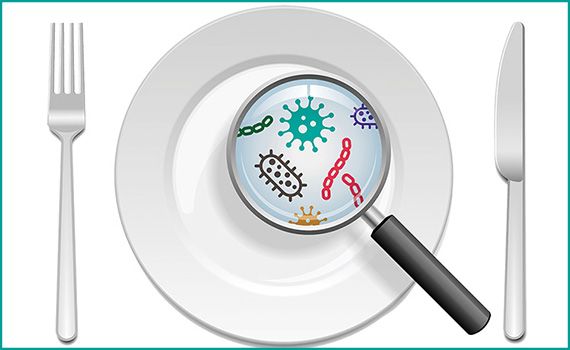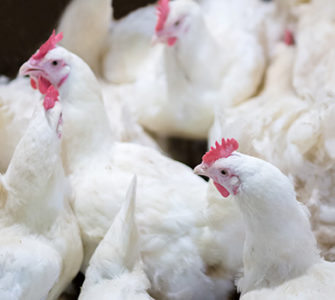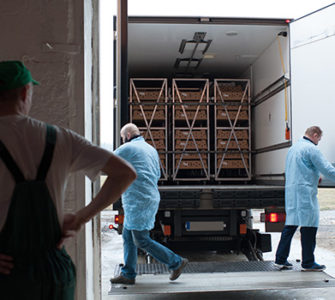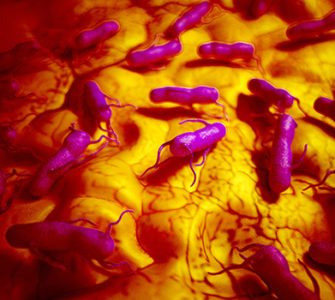Hofacre: There’s always room for improvement with Salmonella
Most US poultry companies are doing an “outstanding job” controlling Salmonella — not only in processing but in live production, too, as producers supplement biosecurity measures with strategic vaccination programs, according to Charles Hofacre, DVM, PhD, professor and director of clinical services, University of Georgia.
Hofacre was responding to a 2016 interim report from FDA. Although the report raised concern about certain forms of antibiotic resistance, the prevalence of Salmonella in retail poultry has dropped from 15% in 2008 to 9% in 2014.
Still, there’s always room for improvement, he said — even more so now with the new USDA/Food Safety and Inspection Service (FSIS) standards for Salmonella and Campylobacter in ground poultry and poultry parts. (See chart.)

“Focus on the type of Salmonella that has the greatest potential for causing a problem.”
– Charles Hofacre, DVM, PhD
“Salmonella in breeders is like a drippy faucet,” the veterinarian cautioned. “If it keeps dripping into broilers, it makes the level high enough that the processing plant has trouble meeting its goals and targets set by the government’s Food Safety and Inspection Service.
“A lot of companies have begun to realize it’s better to focus on breeder vaccination and get ahead of the game,” Hofacre said in an interview with Poultry Health Today.
There’s no one remedy that will completely eliminate foodborne Salmonella. However, “even if you have a bloom of a particular Salmonella type in the hatchery that could infect a large number of broiler farms, it can be kept to a manageable level if hens are properly vaccinated because they’re passing on maternal antibodies. The processing plant can deal with lower levels of the pathogen,” said Hofacre, who has conducted extensive Salmonella research.
Two-step process
Vaccination of breeders against Salmonella is usually a two-step process, he said. An example would be vaccination of young pullets with live vaccines, usually on days 1 and 14 and 5 to 8 weeks of age. Once they’ve reached the age they’ll be handled — about 10 or 12 weeks of age — it’s important to properly vaccinate them with an inactivated commercial or autogenous vaccine that matches the Salmonella challenge. In some flocks, a second inactivated vaccine will be given.
Vaccine selection is critical, however.
“If you have Salmonella Heidelberg or Salmonella Enteritidis in the system, you don’t want to have a vaccine that contains five other Salmonella types besides Enteritidis or Heidelberg. Focus on the type of Salmonella that has the greatest potential for causing a problem,” Hofacre advised.
Many companies opt to make their own autogenous vaccines for this later stage of production. These products are often used successfully but don’t always provide the same peace of mind as commercial vaccines. “With autogenous, you just don’t know how immunogenic those isolates are” because potency and efficacy testing of autogenous vaccines isn’t evaluated by the USDA, he said. For this reason, he prefers the use of commercial vaccines.
Vaccination of broilers?
Should broilers also be vaccinated? That can be a costly option, but there are two situations when Hofacre advises vaccinating broilers against Salmonella:
- If there’s a high load of Salmonella coming into the processing plant — more than the plant can deal with
- When foodborne types of Salmonella that affect human health, such as Heidelberg, S. Typhimurium or S. Enteritidis, are identified in the system
“A broiler-vaccination program can help get those down to levels the plant can knock out. We’re talking about doses [of Salmonella pathogens]. If you get the dose down, there’s still a risk for human illness, but there’s a much lower risk,” he said.
An alternative approach to vaccination would be the use of competitive-exclusion (CE) products, which are used just about everywhere in the world. In breeders, they may help protect young pullets from day-of-age up until the time an inactivated vaccine is used. In broilers, they might be used either with or in lieu of a live vaccine, Hofacre said. “There’s a real reluctance on FDA’s part to approve the undefined CE products, however,” he added. “It would be nice to have more discussion and input from experts regarding the use of undefined CE.”
Other steps
Other Salmonella-control measures producers should take will vary — not only from company to company but from complex to complex within the same company, Hofacre has found.
For example, darkling beetles, which can transmit Salmonella, may be a problem on some farms and not on other farms; perhaps a Salmonella in the hatchery is causing a bloom of the pathogen in broilers. The source of Salmonella needs to be pinpointed as well as the types of Salmonella involved; otherwise it is difficult to impossible to initiate appropriate remedies.
Hofacre sees additional opportunities for improving Salmonella control in processing. For example, he said, the industry is learning it’s better to use an agitated dip with chemical intervention versus simply rinsing carcasses with large volumes of sprayed water. “Agitated dips with chemical intervention appear to be working much better than anything else at the plant” for Salmonella control, he added.
Asked about the role of veterinarians regarding Salmonella control, Hofacre said they provide a bridge between the live-production and processing-plant staff to achieve good control.
“Veterinarians are best suited for determining areas that need attention within a system and for developing a Salmonella management and monitoring program,” he said. “Producers should lean on their veterinarians for these purposes.”
FSIS standards
The chart below, from the USDA FSIS, shows the maximum acceptable percent-positive results before the establishment fails to meet the performance standard. A test is considered positive when any Salmonella or Campylobacter organisms are found.
Salmonella/Campylobacter Performance Standards for Poultry
Posted on September 21, 2017


















